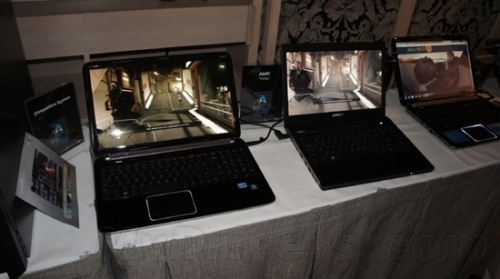 The two major factions of Brazos and Llano successfully opened the AMD Fusion APU industry. The next-generation products are also being prepared. However, the release time may be different from what was said before. The high-performance 32nm Trinity is expected to advance to early next year. Low-power 28nm Wichita may be delayed until the end of next year.
The two major factions of Brazos and Llano successfully opened the AMD Fusion APU industry. The next-generation products are also being prepared. However, the release time may be different from what was said before. The high-performance 32nm Trinity is expected to advance to early next year. Low-power 28nm Wichita may be delayed until the end of next year. AMD CFO Thomas Seifert recently announced at the Deutsche Bank Technology Conference in Las Vegas that the successor to the Llano A-Series APU and the new generation of products code-named Trinity will be released "at the beginning of next year."
Trinity APU, which has just been publicly displayed, was originally expected to be released in the second quarter of 2012. The latest party will be at Computex 2012 in Taipei in early June next year, but now it appears that it will arrive earlier in the first quarter of 2012, and it may even begin at the beginning of the new year. CES 2011 debuted on the stage, and then only six months after the launch of Llano APU.
In response to Intel's push for Ultrabook notebooks, AMD also prepared a tit-for-tat counterattack weapon, which is the low-power version of Trinity APU, the lowest can also be achieved 17W. Thomas Seifert confirmed that by the time the Trinity APU is released next year, the chip will be ready and the graphics performance will far exceed that of Intel.
For foundry partner GlobalFoundries, Thomas Seifert gave the following statement: “We have always believed that GlobalFoundries has huge room for improvement. I think it is indeed.... Performance is not what we need most. We are doing everything we can to push them to meet our needs. Continue to expand cooperation."
Obviously, AMD is very dissatisfied with the performance of GlobalFoundries, especially the immature 32nm process. In addition to technical troubles, GlobalFoundries has also been somewhat unsmooth in its management. Dresden Park in Germany has replaced five leaders for a year and a half. A senior publicist also ran to Intel.
Let's talk about 28nm Wichita APUs for low-power small devices. AMD’s previous plan was to release it sometime in 2012, but no more specific time period has been determined. In fact, there is news that the Brazos platform will at least sell until the fourth quarter of 2012, which means that Wichita will not appear too early.
On the other hand, the estimation may also be related to the 28nm process. Both Wichita and Krishna low-power models will be manufactured on 28nm process, and it is said that AMD is making trade-offs between TSMC and GlobalFoundries to see who is more suitable for OEM, and both companies will not mass produce new technologies until early next year.
Hongzhun Lighting Factory , http://www.gdflashlights.com
